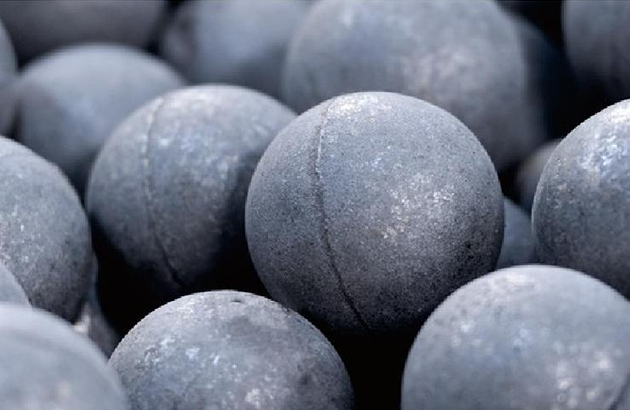
+86 0563-4309002
+86 17705630058
vickyw@gaoxincn.com

In industrial milling operations—particularly in mining, cement, thermal power, and mineral processing—grinding media balls play a crucial role in crushing and pulverizing raw materials. Yet while quantity and size often receive the most attention, grinding media quality is equally, if not more, important. The long-term performance, energy efficiency, and cost control of a plant heavily depend on the material, hardness, toughness, and durability of the grinding balls used.
This article explores in detail why grinding media ball quality is critical for long-term cost control. From wear resistance and operational efficiency to mill downtime and energy consumption, we’ll examine how investing in high-quality grinding balls translates into better performance and substantial savings over time.
Grinding balls are the core component of ball mills and other grinding equipment. Their primary function is to transfer mechanical energy through impact and abrasion to break down materials into fine particles. Quality impacts every stage of this process, affecting:
Material reduction efficiency
Ball wear rate
Mill vibration and stability
Energy transfer and consumption
Maintenance frequency
Inferior grinding media leads to inconsistent grinding performance, increased power draw, and frequent replacements—adding up to high operational costs.
Understanding what defines quality in grinding balls is critical. High-quality grinding media is characterized by:
Correct and consistent chemical composition
High surface and core hardness
Optimized microstructure (martensite, bainite, etc.)
Resistance to abrasion, impact, and corrosion
Low breakage rate
Uniform diameter and spherical geometry
These properties result from meticulous material selection, precise casting or forging, and properly controlled heat treatment.
One of the most immediate benefits of high-quality grinding balls is superior wear resistance. In abrasive environments, lower-quality balls degrade faster, causing:
Reduced grinding efficiency
Media contamination in the final product
More frequent recharging of the mill
High-quality grinding media maintains its shape and hardness, ensuring longer usage per ball and more stable mill operation. Over time, this significantly reduces media consumption and inventory costs.
Grinding processes are energy-intensive, often accounting for up to 40% of a plant's total energy usage. Poor-quality grinding balls:
Deform under load
Transfer energy inefficiently
Lead to non-uniform particle sizes
Increase mill resistance and power draw
In contrast, high-quality balls with consistent hardness and geometry optimize energy transfer and grinding kinetics. This leads to:
Lower kilowatt-hours per ton
Better throughput
More uniform particle size distribution
Over months and years, this reduction in energy costs alone can offset any initial price premium for quality media.
Low-grade grinding balls are more susceptible to internal flaws, voids, or poor heat treatment, increasing the risk of:
Cracking
Chipping
Catastrophic breakage during operation
Such failures can:
Damage mill liners
Contaminate the product
Cause unplanned shutdowns
Pose safety hazards
Quality grinding balls, with carefully controlled casting/forging processes, minimize these risks and improve plant safety and uptime.

Using substandard grinding media often leads to more frequent mill stoppages for:
Ball replenishment
Liner replacement
Ball segregation correction
Equipment inspection
Each stoppage leads to lost production, labor costs, and energy waste during startup. In contrast, durable, high-performance grinding balls maintain their efficiency longer, enabling continuous operation and less downtime.
In cement and mineral processing industries, product consistency is critical. Poor-quality grinding media can cause:
Overgrinding of material
Wide particle size variation
Inconsistent fineness and flowability
High-quality grinding balls ensure a stable grinding environment, improving the control of product specifications and reducing the risk of off-grade batches.
Many plant operators are tempted by the lower upfront cost of budget grinding balls. However, long-term analysis shows that:
Higher consumption rates
More frequent mill stoppages
Increased liner wear
Greater energy use
Lower overall productivity
Long service life
Stable grinding conditions
Lower maintenance
Better energy utilization
Predictable performance
Over months and years, quality media offers a significantly better return on investment and lowers the total cost of ownership.
Not all grinding applications are the same. Quality manufacturers provide grinding balls that are:
Tailored to specific mill types (e.g., SAG, ball mill, vertical mills)
Adapted to material hardness and feed size
Optimized for dry or wet grinding
Available in various sizes, hardness levels, and chromium content
This customization ensures that the grinding ball’s performance aligns precisely with operational goals, maximizing efficiency and service life.
Consider two similar milling operations. One uses budget grinding balls replaced monthly; the other uses high-quality balls replaced every three months.
Over one year:
Media consumption is reduced by over 50%
Energy savings exceed 15%
Downtime is reduced by 30%
Maintenance labor costs decrease
Overall output is more stable and predictable
Despite the higher initial price, the second plant enjoys lower total costs and better financial performance.
Sourcing grinding media from reputable manufacturers ensures:
Certified raw material traceability
Advanced casting or forging techniques
Modern heat treatment technologies
In-house testing for hardness, impact, and metallography
ISO or equivalent quality management systems
Purchasing decisions based solely on price can be risky. Partnering with a quality-focused supplier offers long-term security and predictable performance.
Modern grinding operations are moving toward:
Smart monitoring systems for ball wear and performance
Automated mills with real-time control
Environmentally friendly media with low chromium leaching
Hybrid and ceramic-based media for specific applications
As technologies evolve, grinding media quality will continue to play a foundational role in plant productivity, energy optimization, and sustainability goals.
The quality of grinding media balls is not a trivial detail—it is a strategic decision that directly affects the long-term cost, efficiency, and stability of industrial grinding operations. Low-grade media may seem cost-effective initially, but hidden costs related to wear, downtime, energy use, and poor grinding outcomes quickly add up.
By choosing high-quality grinding balls that are engineered for wear resistance, hardness, and reliability, operations can reduce overall media consumption, improve energy efficiency, stabilize mill performance, and lower total cost of ownership.
In competitive industrial sectors where margins are tight and efficiency is critical, investing in top-quality grinding media is a smart move toward long-term cost control and sustainable productivity.
Comment
(0)